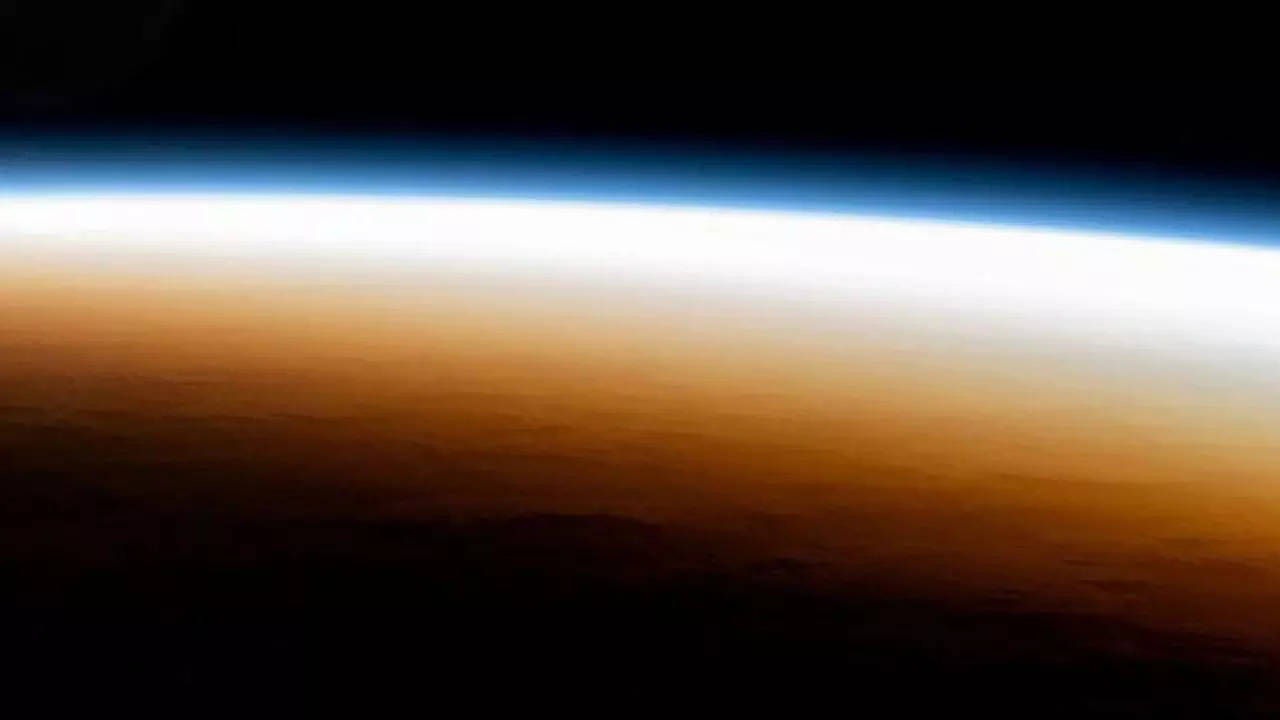A terminator spotted! And no, not the ones sent by Skynet—but a natural phenomenon as fascinating as an arsenal of cyborgs. This event, known as the Earth’s terminator, is a breathtaking moment when a new day dawns on our planet. The International Space Station (ISS), which was 267 miles above the Pacific Ocean north of Auckland, New Zealand, at that time, captured this thin line that separates day from night.
The ISS is programmed to complete 16 orbits of the Earth in a single day, giving it a prime vantage point to capture various phenomena that would otherwise be impossible to observe. NASA uploaded these pictures on Instagram with the caption, “The Earth’s atmosphere is illuminated by a new day as the International Space Station (@ISS) orbits 267 miles above the Pacific Ocean north of Auckland, New Zealand. In this image, you can spot the terminator, or the boundary between night and day. The ISS makes 16 orbits of the Earth in 24 hours – that’s 16 sunsets and sunrises a day!” Describing the picture, the post adds, “Earth’s atmosphere glows in blue across the horizon. Beneath it, a sliver of the Earth glows in shades of gold as the sun rises.”
Understanding Earth’s Terminator
The terminator, also known as twilight, is a moving line that divides Earth—or any other planet or celestial object—between daytime and nighttime. This line passes over Earth twice each day: once at sunrise and once at sunset. However, the high latitudes near the North and South Poles, which experience periods of total darkness or total light, are exceptions to this routine. The terminator line moves depending on Earth’s rotation on its axis, varying with the seasons.
Earth’s imaginary axis is tilted at 23.5 degrees. As Earth revolves around the sun throughout the year, this tilt causes the two hemispheres to receive varying amounts of sunlight, leading to changing seasons. The shape of the terminator line changes with the seasons, most noticeably when comparing its shape during an equinox and a solstice.
During the equinoxes, the sun is directly above the equator, making the duration of day and night equal. There is no tilt in Earth’s axis with respect to the sun, which is perpendicular to the orbit, and therefore, the terminator line runs parallel to Earth’s axis and lines of longitude.
In contrast, during a solstice, Earth’s axis tilts the most towards or away from the sun. During this period, the sun is farther north or south of the equator than at any other time. As a result, the terminator line is angled at approximately 23.5 degrees relative to Earth’s axis.
The ISS is programmed to complete 16 orbits of the Earth in a single day, giving it a prime vantage point to capture various phenomena that would otherwise be impossible to observe. NASA uploaded these pictures on Instagram with the caption, “The Earth’s atmosphere is illuminated by a new day as the International Space Station (@ISS) orbits 267 miles above the Pacific Ocean north of Auckland, New Zealand. In this image, you can spot the terminator, or the boundary between night and day. The ISS makes 16 orbits of the Earth in 24 hours – that’s 16 sunsets and sunrises a day!” Describing the picture, the post adds, “Earth’s atmosphere glows in blue across the horizon. Beneath it, a sliver of the Earth glows in shades of gold as the sun rises.”
Understanding Earth’s Terminator
The terminator, also known as twilight, is a moving line that divides Earth—or any other planet or celestial object—between daytime and nighttime. This line passes over Earth twice each day: once at sunrise and once at sunset. However, the high latitudes near the North and South Poles, which experience periods of total darkness or total light, are exceptions to this routine. The terminator line moves depending on Earth’s rotation on its axis, varying with the seasons.
Earth’s imaginary axis is tilted at 23.5 degrees. As Earth revolves around the sun throughout the year, this tilt causes the two hemispheres to receive varying amounts of sunlight, leading to changing seasons. The shape of the terminator line changes with the seasons, most noticeably when comparing its shape during an equinox and a solstice.
During the equinoxes, the sun is directly above the equator, making the duration of day and night equal. There is no tilt in Earth’s axis with respect to the sun, which is perpendicular to the orbit, and therefore, the terminator line runs parallel to Earth’s axis and lines of longitude.
In contrast, during a solstice, Earth’s axis tilts the most towards or away from the sun. During this period, the sun is farther north or south of the equator than at any other time. As a result, the terminator line is angled at approximately 23.5 degrees relative to Earth’s axis.
Denial of responsibility! Swift Telecast is an automatic aggregator of the all world’s media. In each content, the hyperlink to the primary source is specified. All trademarks belong to their rightful owners, all materials to their authors. If you are the owner of the content and do not want us to publish your materials, please contact us by email – swifttelecast.com. The content will be deleted within 24 hours.


